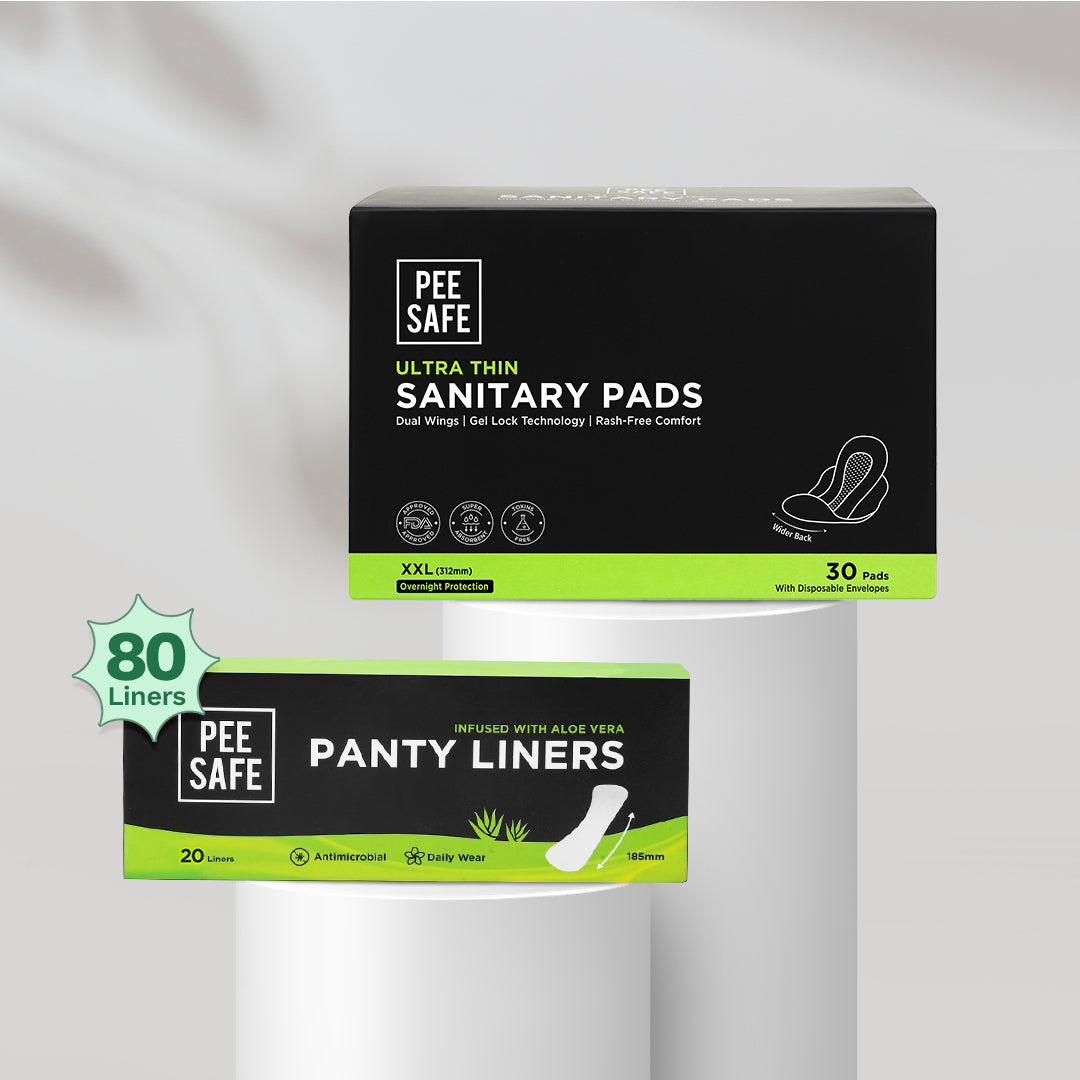Have you ever thought that you got your period only to realise that it’s discharge instead? Yep, vaginal discharge seems to be playing us all when it nears the time of our period. So why does this pseudo-period make an appearance and how do you deal with it?
Read on to find out more!
What Is Vaginal Discharge?
Vaginal discharge refers to the mucous or fluid that is produced by the glands inside the vagina and cervix. The main function of vaginal discharge is to maintain and promote good vaginal health. Discharge helps clean the vagina and keeps you from wondering “why is my vagina dry?” It also combats any sort of infection.
Why Do We Get Vaginal Discharge?
Other than vaginal discharge being a normal bodily function, there can be a few other reasons:
- Sexual Arousal: When you get sexually aroused, your vagina produces discharge which acts as a natural lubricant.
- Hormonal Changes: Changes in hormone levels also lead to a fluctuation in the vaginal discharge produced. This can be seen primarily during puberty and menopause.
- Medications And Contraceptives: Some forms of medication and contraceptives can also change the production of discharge.
- Infections And Illnesses: Bacterial infections and illnesses may change the consistency, odour and colour of discharge.
How Does Vaginal Discharge Look?
The texture, colour, and odour of vaginal discharge may change as you progress through your menstrual cycle. It can happen before and during your cycle. Vaginal discharge after periods is quite common too. It is also affected by a plethora of other factors such as diet, lifestyle, and infections. Here are a few parameters by which you can gauge if your vaginal discharge is normal or not-
- Texture: Vaginal discharge may vary in texture ranging from watery to sticky and slimy. This is generally considered healthy and normal. In case of any infections, discharge may also be a little thick, often being referred to as “curd-like” consistency.
- Colour: Healthy discharge is often clear, or white in appearance. In case your discharge is green, yellow or dark brown there might be some underlying conditions.
- Smell: Vaginal discharge can usually have a slight scent but, if your discharge smells somewhat strong or different, you might want to get it checked out.
How Can I Deal With Vaginal Discharge?
Feel like things are a little too free-flowing down there? There are a bunch of ways you can combat vaginal discharge. Some of these are-
- Cotton Underwear- Wearing breathable cotton underwear can prevent any moisture buildup especially in the summers.
- Panty Liners: Panty liners are like the long lost sibling of sanitary pads. These liners are generally worn to absorb vaginal discharge. Short and thin, these liners ensure that you feel fresh and your underwear stays clean, all day long!
- Cleaning: Ensure that you’re cleaning your vaginal regions with mild soap and water on a regular basis. You can also try using an intimate wash, which will help you maintain hygiene and the pH levels of your vagina.
- Balanced Diet: A balanced diet can also promote healthy vaginal discharge.
Albeit being a natural bodily function, vaginal discharge can also be a subtle indication of a serious medical condition. It is important to be cognizant of your discharge. If you notice any change in colour, odour or texture make sure you seek help from a medical practitioner.
-
✍️ This article was curated by Sarah Abraham


































